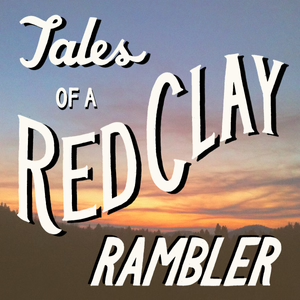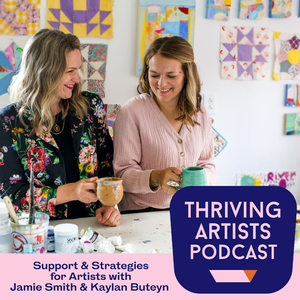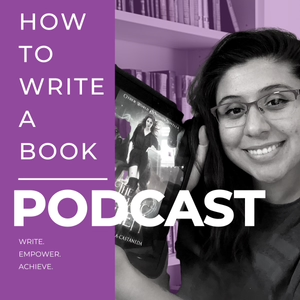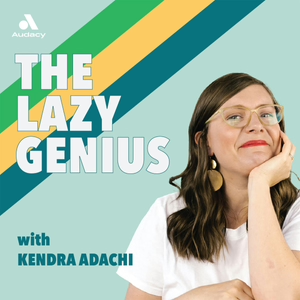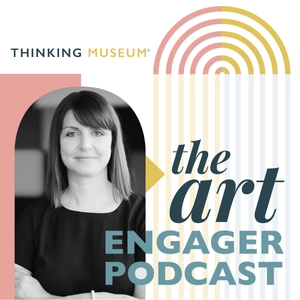
Improving Mental Health and Wellbeing Through Art with Heather Thomas
03/30/23 • 29 min
2 Listeners
In Episode 92, I'm chatting to Heather Thomas, the Head of Learning and Engagement at the Lightbox Museum and Gallery in Woking, UK.
Heather talks about how their Art and Wellbeing programme of creative and therapeutic workshops provides opportunities for those that would otherwise not be able to access arts and heritage services.
We discuss the guiding principles behind the Lightbox Museum and Gallery's work in learning and engagement, which has always included helping people with mental health issues or those who are isolated.
We also discuss what the Open Mind project is and how it provides a safe space for individuals to come and learn something new, chat with others and engage with art.
We talk about how Open Mind tours prioritise connection over content and are wholly participant-led, open conversations that take their cues directly from the participants, not the facilitator.
Finally, we talk about the positive outcomes of the programme and the Lightbox's plans for the future.
Links
Lightbox website: www.thelightbox.org.uk
Museums Journal (Museums Association UK) article: https://www.museumsassociation.org/museums-journal/analysis/2022/11/its-time-for-museums-to-address-mental-health/
Baring report: https://baringfoundation.org.uk/resource/creatively-minded-at-the-museum/
Mind: https://www.mind.org.uk/
Catalyst: https://www.catalystsupport.org.uk/
If you are struggling, please contact Samaritans https://www.samaritans.org/
Young Minds website for children and young people: https://www.youngminds.org.uk/
In Episode 92, I'm chatting to Heather Thomas, the Head of Learning and Engagement at the Lightbox Museum and Gallery in Woking, UK.
Heather talks about how their Art and Wellbeing programme of creative and therapeutic workshops provides opportunities for those that would otherwise not be able to access arts and heritage services.
We discuss the guiding principles behind the Lightbox Museum and Gallery's work in learning and engagement, which has always included helping people with mental health issues or those who are isolated.
We also discuss what the Open Mind project is and how it provides a safe space for individuals to come and learn something new, chat with others and engage with art.
We talk about how Open Mind tours prioritise connection over content and are wholly participant-led, open conversations that take their cues directly from the participants, not the facilitator.
Finally, we talk about the positive outcomes of the programme and the Lightbox's plans for the future.
Links
Lightbox website: www.thelightbox.org.uk
Museums Journal (Museums Association UK) article: https://www.museumsassociation.org/museums-journal/analysis/2022/11/its-time-for-museums-to-address-mental-health/
Baring report: https://baringfoundation.org.uk/resource/creatively-minded-at-the-museum/
Mind: https://www.mind.org.uk/
Catalyst: https://www.catalystsupport.org.uk/
If you are struggling, please contact Samaritans https://www.samaritans.org/
Young Minds website for children and young people: https://www.youngminds.org.uk/
Previous Episode

3 New Thinking Routines to Try in Your Museum and Gallery Programmes
Are you tired of using the same old thinking routines in your museum and gallery programmes? Maybe it's time to try something new? In this week’s episode, I'm sharing three exciting thinking routines that you can add to your repertoire.
These routines will help you engage your audience and encourage them to think creatively about art and objects.
- Start with the basics: building a repertoire of thinking routines.
- Experiment and try new thinking routines to stay curious and inspired.
- Three new thinking routines to try out: Imagine If, Take Note, and Creating Space for Learning
- Imagine If: a thinking routine for looking closely, finding opportunity, and pursuing new ideas.
- Take Note: a thinking routine for distilling ideas in response to a piece of art or an object.
- Creating Space for Learning: a thinking routine that is essentially a grounding exercise that helps us to prepare for any programme, class or task.
Three new thinking routines for you to try out. I hope you find them helpful in engaging your audience with art and objects in a new and exciting way.
Links
EPISODE WEB PAGE
Episode 6 - 6 Essential Thinking Routines You Need in your Repertoire
Episode 16 - How to use See Think Wonder in your Art Discussions
Episode 57 - How to End Well
Episode 59 - 9 Thinking Routines to Improve your Powers of Observation
Download the Ultimate Thinking Routine List
Join the Slow Looking Club Community on Facebook
Download the NEW resource - how to look at art (slowly)
Curated newsletter by Claire Bown
Next Episode

Slow Art and the Power of Slowing Down with Carl Honoré
Today on the podcast, I'm delighted to be talking to bestselling author, broadcaster, two-time TED speaker and voice of the Slow Movement, Carl Honoré.
In this episode, Carl Honoré, author of "In Praise of Slow," shares his insights on the benefits of slowing down in every aspect of life.
Our conversation centres around the slow movement, and how slowness can 'rehumanise' us in a culture that values speed above everything else.
We also discuss the slow art movement and how museums and other cultural institutions can be more welcoming for visitors who want to take a slower approach to art.
Main talking points:
- Carl Honoré's book "In Praise of Slow" and the impact it had on society and the slow movement
- How the slow movement is not just about slowing down for its own sake, but about reclaiming our humanity in a culture that treats us like machines.
- How the slow movement fits into the larger cultural conversation about resisting the pressures of a culture that values speed and productivity above all else
- How the pandemic has affected our relationship with time and speed, and whether it has led to a greater appreciation for slowness.
- How slow art can be an antidote to the fast-paced culture we live in
- How museums are finding ways to create slow environments and programmes to invite people to engage deeply with art.
- How blockbuster exhibitions (such as the Vermeer exhibition in the Rijksmuseum)and wall labels can help or hinder us in the experience we might have in a museum.
- The importance of building the muscle to observe, contemplate, and look deeply at art, especially in children
- Four ways we can all incorporate the principles of slow more fully into our own lives
Links
Download my new Slow Art Guide
Download the resource - how to look at art (slowly)
Join the Slow Looking Club Community on Facebook
Carl Honoré's website:
Useful links www.carlhonore.info
Carl Honoré on Social Media:
TED Talk 'In Praise of Slow'
If you like this episode you’ll love
Episode Comments
Generate a badge
Get a badge for your website that links back to this episode
<a href="https://goodpods.com/podcasts/the-art-engager-245896/improving-mental-health-and-wellbeing-through-art-with-heather-thomas-29068035"> <img src="https://storage.googleapis.com/goodpods-images-bucket/badges/generic-badge-1.svg" alt="listen to improving mental health and wellbeing through art with heather thomas on goodpods" style="width: 225px" /> </a>
Copy
